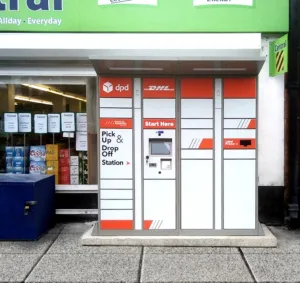By Guy Hanson, Vice President, Customer Engagement at Validity
Frictionless user experience has been at the top of ecommerce agendas over the last couple of years, with a real focus on providing customers with smooth and efficient journeys. However, in this bid to improve convenience and ease, consumers have begun to question whether this is coming at a cost to their privacy. For example, customers want to know that their personal details are being kept safe, and in many instances may have been conditioned to expect friction – whether needed or not – as a sign that companies are not cutting any corners in regards to regulation and compliance.
Managing consumer expectations
Indeed, there are forms of friction that benefits both the business and consumers, and may even add to the customer experience overall, while there are also innovations that businesses can leverage to reduce friction where desired without compromising security or consumer confidence. The key is in striking the right balance so that ultimately, companies can maintain or improve their customer relationships and brand reputation amid what is a very challenging time for the industry.
The desire to reduce friction can create security risks that in turn lead to data breaches. That’s one of the reasons new data laws like GDPR have been introduced, as GDPR means companies have had to become more intentional about providing information to their customers around what personal data they are requesting, why they are requesting it, and how they will use it.
This has created more friction – for example, information that might previously have been hidden in the Terms & Conditions should now be presented as part of the sign-up form, meaning the subscriber needs to take the time to read it. Or in brick and mortar stores, when you are asked at Point of Sale whether you would like to receive an e-receipt and now need to listen to the till operator run through their script to advise you of your right to opt out of receiving any email marketing.
Applying positive friction
Yet some friction is arguably positive in the long run. A perfect example would be the use of double opt-in (DOI) as a sign-up mechanism for email programmes. This is where a new registration is not completed until the new subscriber has received an activation email and clicked on the link to confirm it’s a valid sign-up. There is some friction here as some people will inevitably drop out of the process between providing their email and clicking on the activation link, but there is an established principle that DOI builds more engaged and responsive marketing audiences as a result, which ultimately generates higher return on investment (ROI). This can be attributed to the additional friction by making people more intentional about supplying a valid email address, and that the process provides an indicator of a programme that is more focused on security. Use of DOI in the UK has doubled since GDPR came into force, because it provides solid proof that consent has been provided.
Another example of positive friction relates to the sign-up process, where the change from pre-checked consent boxes to unchecked consent boxes require a physical action to populate therefore more friction created. As with DOI, this has actually created more engaged audiences due to a stronger “memory” of the act of signing up. Previous DMA research has shown up to half of consumers “sometimes/often wonder how the sender got their email address in the first place”, which can put potential customers off, but this figure has now reduced.
The introduction of unchecked boxes created a challenge for companies as there is research supporting the notion that the default setting is for customers to not have to do anything. However, when companies like Sainsbury’s dealt with this by creating a mandatory action to opt-in or opt-out, thereby forcing an action, split testing showed they actually achieved higher opt-in rates by doing so.
Valuing the right data
Many online sign-up forms still request the bare minimum data at point of sign-up, but this is starting to change. When people provide a piece of personal data like a date of birth or a post code, this data can be used in future communications to provide reassurance that the messages are legitimate. This is why banking emails will often include part of your post code, because scammers are far less likely to have this information.
We are starting to see a shift towards requesting more data at point of sign up, or through the use and progressive registration and survey techniques. While this does introduce more friction, consumers are typically receptive as long as the recipient is transparent about why the data is being requested and what purposes it will be used for.
We can’t discuss friction without touching on the principle of fair value exchange. Around 50% of consumers will provide personal data if they believe they will receive the equivalent value in return. For example, in exchange for their data, would the customer receive a similar amount in return – which may look like discounts, free delivery, but also in the form of useful information and helpful advice. Taking the time and effort upfront to explain this will create more friction, but it’s positive friction in the sense that marketers will benefit from this investment in their new customer relationships.
Looking ahead
Increasingly, innovations designed to reduce friction do so without compromising security and consumer confidence are being deployed. However, consumers must be educated about these tools in order to ensure they understand what is occurring behind the scenes to keep their data safe. For email marketers, for example, the implementation of Domain-based Message Authentication, Reporting & Conformance (DMARC) is a good example. This protocol effectively provides an instruction from senders to mailbox providers like Gmail and Outlook.com to block or delete any emails purporting to be from the sender, but failing to match a pre-defined set of IP addresses and sending domains.
This reduces friction for email subscribers by not having to scrutinise as many emails to determine whether they are legitimate or not.
Another recent example is the use of tracking pixels to record behaviour like open rates and device usage. Senders are obliged to notify their subscribers that this happens, and some are proactively including messaging about this at point of capture, and in subsequent emails. This may be seen to create additional friction, but it’s a key opportunity to educate subscribers around how they benefit, i.e. their emails can be tailored to more accurately reflect needs and interests based on what they respond to, and frequency can be tailored to reflect levels of engagement/disengagement.
Ultimately, the businesses that win in the next era of ecommerce will be those that perfect the balance of reassuring customers their valuable data is safe and protected, while also minimising the steps required for a consumer to get the product or service they’re there to purchase.







